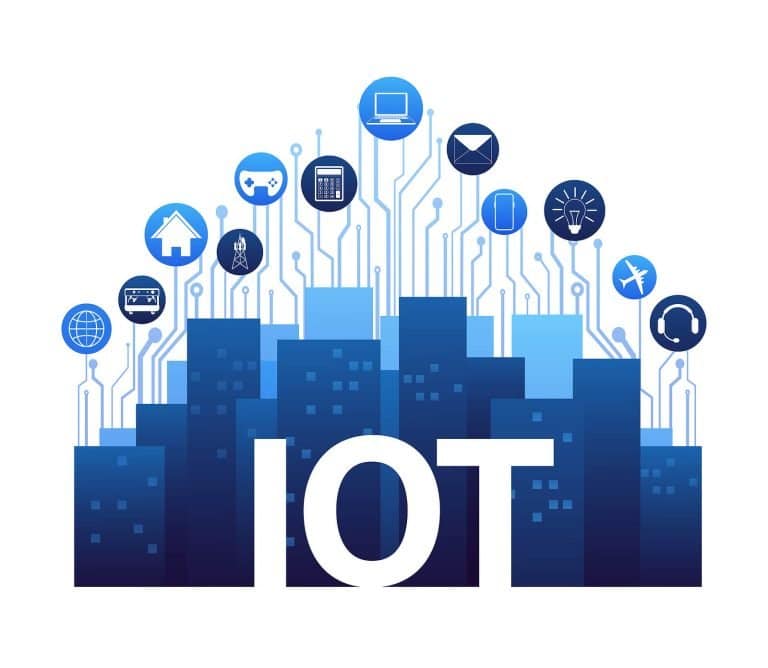The Internet of Things – commonly referred to as IoT – is drastically transforming the way society functions and how businesses are run. Be it manufacturing, transportation, telecoms, logistics, retail, finance or healthcare, IoT technology is on course to disrupt practically every industry, and it’s opening up new opportunities for businesses the world over.
Table of Contents
ToggleAccording to a recent Forbes Insights survey of more than 700 executives across a range of sectors, 84% say their Internet of Things networks have grown over the past three years. What’s more, 60% of enterprises are, with the help of their IoT initiatives, expanding or transforming with new lines of business, with 36% considering potential new business directions. In addition, 63% are already delivering new or updated services directly to customers using the Internet of Things.
By industry, nearly six in ten (58%) executives in the financial services sector report having well-developed IoT initiatives, as are 55% of those at healthcare organizations, 53% in communications, 51% in manufacturing, and 51% in retail.

(Image source: info.forbes.com)
Leveraging the Internet of Things as a business transformation strategy has proven results, including increased profitability. The survey shows 75% of leading enterprises crediting IoT with delivering increased revenue, with 45% reporting that the Internet of Things has helped boost profits by 1% to 5%, and another 41% saying the impact has boosted profits by 5% to 15% annually. Over the coming year, nearly all (94%) executives anticipated a profit boost of at least 5% to 15% as a result of the Internet of Things. In addition, 73% of leading IoT enterprises report corporate growth exceeding 10% in the most recent fiscal year.

(Image source: info.forbes.com)
Utilizing IoT to Grow Your Business
There are already more that 20 billion IoT connected devices around the world, with figures from Statista projecting the number to increase to 30 billion by 2020, and more than 75 billion by 2025. With such huge-scale proliferation, it should come as no surprise that it’s not just large corporations that can reap the benefits and drive business growth by leveraging the Internet of Things, but early-stage startups and SMBs, too.
In fact, by embracing IoT solutions, small- to medium-sized enterprises across a wide range of sectors can implement strategies to improve operational efficiency, drive down costs, reach new customers, and increase profitability. Below are just some examples of how IoT strategies can make positive impacts on a business.
Improving Customer Engagement and Experiences
Not only do IoT devices connect and “talk to” one another, they also gather data. This data can be turned into insights, allowing businesses to better understand their customers and their preferences, and provide more opportunities to personalize customer engagement.
For example, geolocation beacons can increase the visibility of local businesses to the customers that are closest to them, and those businesses can then push targeted advertisements and marketing messages to customers, alerting them to personalized offers and deals when in or near a store.
The Internet of Things is also creating opportunities for retailers to employ computer vision – via cameras and other sensors – to gain greater insight into customer behavior and requirements. 47% of the executives surveyed by Forbes Insights reported they had implemented visual analytics across parts of their enterprises to capture information on people, objects and situations. On-floor cameras tied to artificial intelligence (AI) or analytic systems, for instance, can enable retailers to better understand and anticipate customer reactions to sales floor promotions, and adjust strategies accordingly.
In addition, 56% of the surveyed executives said they are investing in the Internet of Things to improve customer experience (CX), and 42% said they have been able to expand their personalization capabilities as a result of IoT. The amount of data flowing in from a multitude of customer touchpoints provides a multi-dimensional view of customer experiences and satisfaction levels in ways that were not possible before. For example, IoT sensors – particularly cameras – are now being deployed in airports to provide better experiences for passengers waiting in lines or using facilities. Long queues, bottlenecks, broken escalators, and dirty washrooms can all be identified and situations analyzed, and airport maintenance and security teams can be automatically dispatched to address problems and inconveniences. Such systems could be deployed at smaller locations with for similar purposes.
Predictive Maintenance and Improved Performance
One of the most useful functions of IoT technology is the ability it gives devices to collect and analyze data, and then share that data with other connected devices on the network. This means that they are able to generated maintenance reports in real-time, and alert the organization if a machine is not working properly or a part needs replacing. In addition, a sophisticated IoT system would even be able to order the part, and, in the case of a field service business, schedule an engineer to the site to make the necessary repairs.
Naturally, such systems have extremely high value in manufacturing, where sensors located in productions systems, assembly lines, warehouses and vehicles will help with predictive maintenance. This, of course, is much more efficient than reactive maintenance, as the ability to prevent machine and equipment failures before they occur significantly reduces – if not eliminates – the risks of business disruption.
Beyond this, deploying IoT sensors in equipment will also help managers understand how operations are flowing, and gain increased insight into the productivity and performance of their systems and processes, driving new opportunities for innovation and growth.
In addition, the Internet of Things can bring companies within separate industries closer together. For example, UPS, a global delivery company, has managed to get data flowing from its massive truck fleet to its manufacturing partner. As Jack Levis, Director of Process Management at UPS, explains to Forbes Insights: “We get IoT data on the health of an engine. Our automotive engineers came up with analytics on top of that to look for indicators that a failure may happen in the future. With analytics, we went from preventive maintenance to predictive maintenance. We do this by looking at which part is behaving differently from its peers. We’ve found some new vehicles behaved differently from their peers, and worked with the manufacturers on opportunities to fix their production line.”
Shipment and Inventory Tracking
For businesses that rely on storage and warehousing, inventory tracking and management is a big issue, particularly in terms of the drain on time and resources the human workforce suffers resolving inventory-related matters.
With IoT tags and sensors, an organization can get a centralized view of precisely where everything is in the supply chain – be it the factory, the warehouse, the delivery vehicle, or the shop floor – all in real time. Not only will this free up the workforce to invest their time in more business-critical tasks, but the resulting data generated can be used to optimize space, processes, and ordering, saving money and manpower.
Greater Efficiency and Productivity
As the Internet of Things expands across the organization and its ecosystems, processes become increasingly digitized, improving visibility, reducing costs, and increasing speed to market. 37% of the executives surveyed for Forbes Insights are seeking greater productivity and efficiency from their IoT strategies.
For organizations that need to move shipments of merchandise or other materials, such gains can be realized, for example, by rerouting vehicles to avoid traffic delays and enable faster travel times. And the same holds true for any business that delivers any goods at all – be it fast food or fast fashion.
For Jeremy Stickling, VP of Human Resources and Safety at Nussbaum Transportation, the company’s IoT implementations helps it optimize loads and route planning. “As trucking has traditionally had a ‘go-go- go-get-it-done’ mindset, the paradigm has shifted, and productivity comes from carefully executed load planning and scheduling,” Stickling says. “At Nussbaum, we are always looking at ways to improve our grading system. Truck manufacturers are constantly adding new sensors, which our company evaluates on a case-by-case basis to see what they are tracking. We are also very in tune with Camera Vision – real-time visual analytics – as we think that is the next level of IoT.”
Security and Energy Savings
IoT technology is also giving rise to smart buildings. Here, connected security systems can improve security in a number of ways. Smart cameras upload to the cloud, so footage can be accessed even months later if need be. If alarms are tripped due to an intruder, the authorities can be automatically notified and an alert sent to managers’ smartphones. Smart locks can open and lock doors at set times of the day, and employees can be issued with digital keys that can’t be lost or stolen, and can be revoked at any time.
Energy savings can also be realized. Smart thermostats and lightbulbs track energy usage and can be managed remotely or programmed to act automatically – say, by switching off the lights at set times of the day, or by automatically turning off the heating when temperatures reach a certain point. It all translates into better energy usage, potentially creating huge savings without having to deploy human resources to manage it.
Final Thoughts
The Internet of Things presents many opportunities for organizations of all sizes and across all industries to drive business growth in innovative new ways. With more connections comes more data, and with more data comes more opportunities to innovate and improve processes. IoT is indeed a compelling value proposition for enterprises, and will be a major driver of business transformation over the coming years.
Summary:
What does IoT Mean for Business?
The Internet of Things – commonly referred to as IoT – is drastically transforming the way society functions and how businesses are run. What’s more, 60% of enterprises are, with the help of their IoT initiatives, expanding or transforming with new lines of business, with 36% considering potential new business directions. In addition, 63% are already delivering new or updated services directly to customers using the Internet of Things. By industry, nearly six in ten (58%) executives in the financial services sector report having well-developed IoT initiatives, as are 55% of those at healthcare organizations, 53% in communications, 51% in manufacturing, and 51% in retail. The survey shows 75% of leading enterprises crediting IoT with delivering increased revenue, with 45% reporting that the Internet of Things has helped boost profits by 1% to 5%, and another 41% saying the impact has boosted profits by 5% to 15% annually. IoT devices connect and “talk to” one another and gather data. This data can be turned into insights, allowing businesses to better understand their customers and their preferences, and provide more opportunities to personalize customer engagement.




